1. Carol Burnett’s Iconic Curtain‑Rod Dress
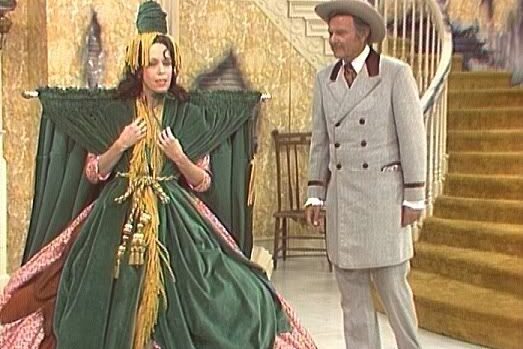
In 1976 Went With the Wind! sketch parody (rooted in the show’s late‑1960s style), Carol Burnett wore a green curtain dress with the rod still attached across her shoulders and an improvised valance hat, an intentional sight gag designed by Bob Mackie. The moment turned into classic TV comedy and made Macy’s funnier than glamorous, while also becoming one of TV Guide’s all‑time funniest sketches. The costume was later donated to the Smithsonian’s National Museum of American History in 2009 by Mackie and Burnett, marking its importance as an artifact of entertainment history.
2. The Ed Sullivan Show Beatles U.S. Debut
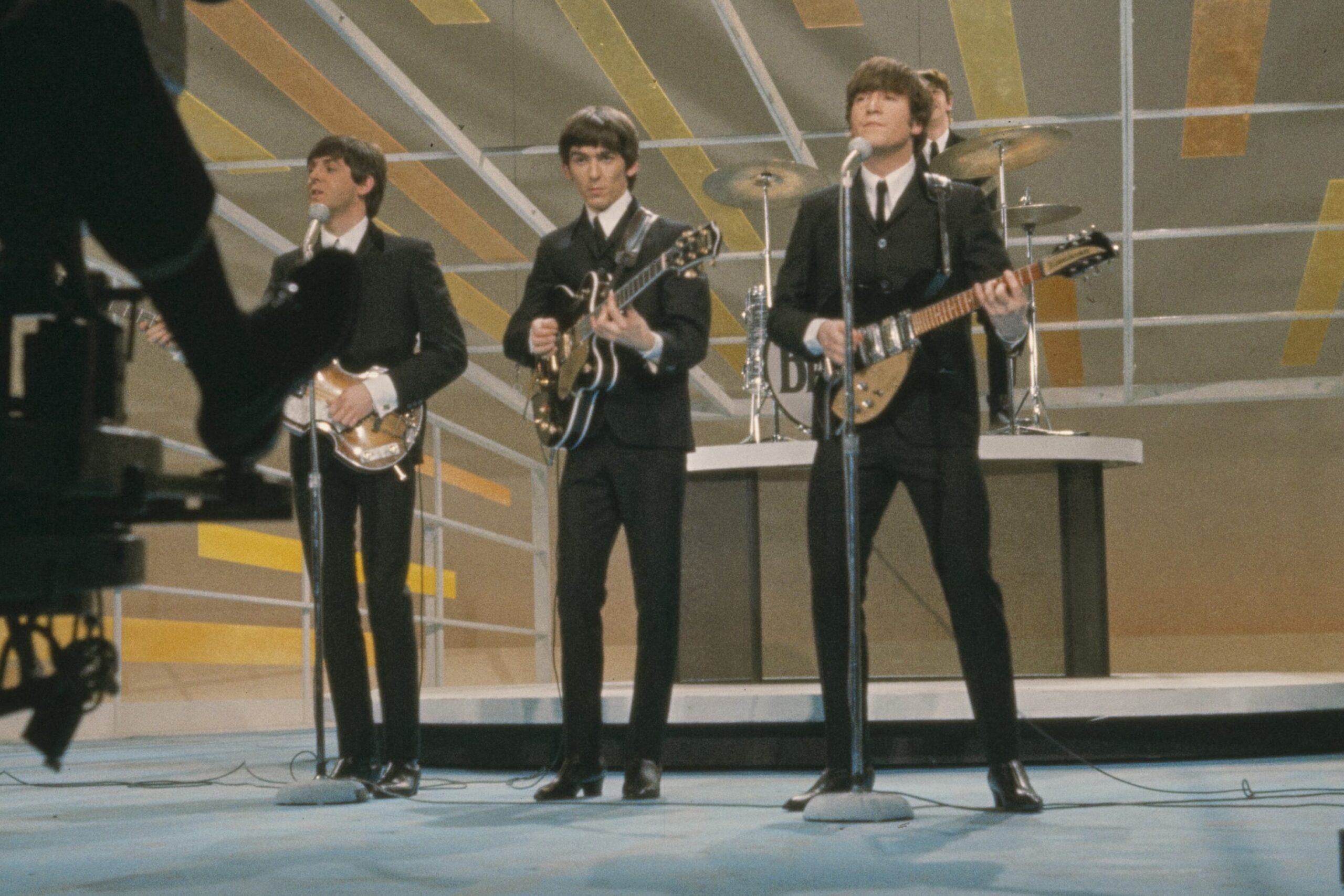
When The Beatles appeared live on The Ed Sullivan Show on February 9, 1964, it wasn’t just a musical performance, it was a historic cultural moment. With an estimated 73 million viewers, their U.S. television debut introduced British pop to millions, launching “Beatlemania” and forever changing the relationship between TV and pop music. For American networks, the broadcast proved music acts could draw massive cross‑demographic audiences. That performance set a template for televised musical events, from costume‑heavy concerts to future global TV specials.
3. Mister Rogers’ Pool Scene Protest Against Segregation
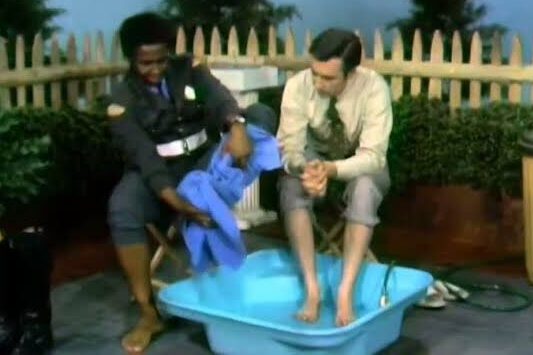
In a May 9, 1969 episode of Mister Rogers’ Neighborhood, Fred Rogers invited Officer Clemmons (played by François Clemmons) to sit beside him in a kiddie wading pool, dipping their feet in together and sharing a towel. At that time, many public pools in the U.S. still refused entry to Black people, despite the 1964 Civil Rights Act. This simple act quietly but powerfully challenged segregation norms in a way kids and adults alike could witness and understand. Clemmons later reflected that he “carried the hope inside of me that, one day, the world would change,” and Rogers’ gesture remains studied as a powerful example of how gentle television moments can push boundaries.
4. Star Trek’s Kirk and Uhura’s Kiss
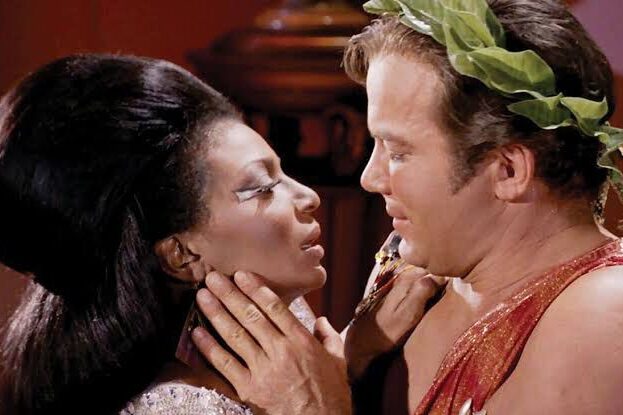
William Shatner’s Captain Kirk kissing Lt. Uhura (Nichelle Nichols) in the November 22, 1968 episode “Plato’s Stepchildren” was one of the first scripted interracial kisses on U.S. television between a Black woman and a white man. While earlier interracial kisses did occur, this one was groundbreaking in mainstream primetime and followed just a year after the U.S. Supreme Court struck down laws banning interracial marriage. The scene was controversial, but major media outlets and networks didn’t pull the episode, forcing a cultural shift that accepted diversity on‑screen. That moment also sparked one of the largest waves of fan mail Paramount ever received for a single episode. This unexpected act of creative defiance helped Star Trek become a beacon for representation in TV history.
5. The Fugitive Record‑Setting Finale
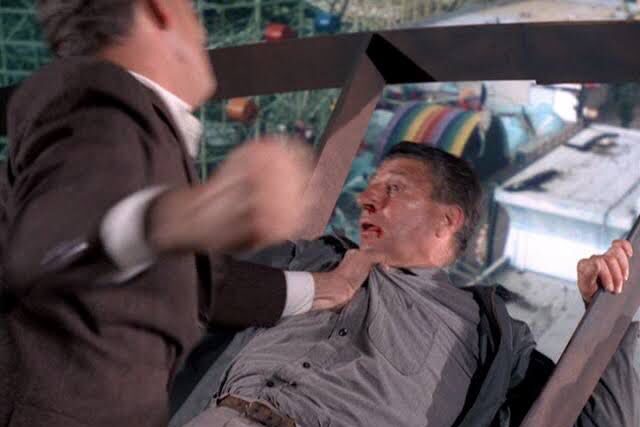
When The Fugitive aired its two‑part finale “The Judgment” on August 29, 1967, it drew 78 million viewers, about 72 percent of all people watching TV that night, making it the most‑watched episode in history at that time. For a drama series with a long‑running mystery arc, this level of attention proved serialized storytelling could pay off in primetime. The dramatic reveal and final confrontation of Dr. Richard Kimble and the “one‑armed man” created a cultural event. Until Dallas’ “Who Shot J.R.?” in 1980, The Fugitive’s finale held the ratings record. Its success showed that audiences would stay hooked on character‑driven suspense and long‑term payoff, and helped pave the way for future serialized TV hits that gradually unfolded major storylines over weeks and seasons.
6. Twilight Zone “Time Enough at Last” Finale
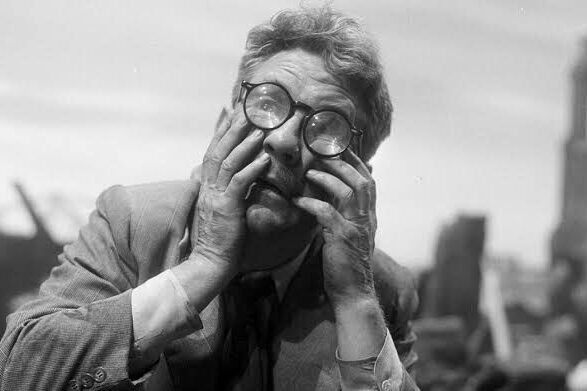
In the episode “Time Enough at Last”, originally broadcast in 1959 but syndicated heavily in the ’60s, book‑loving Henry Bemis survives a nuclear apocalypse only to break his glasses, ending with ironic devastation. That final image of Bemis sobbing over broken lenses is often cited as one of TV’s most chilling and emotional closings. This story demonstrated TV’s ability to deliver deeply emotional experiences, and showed that a twenty‑five‑minute drama could resonate long after the credits. Viewers still recall its shock ending as a perfect example of television’s emotional and philosophical potential.
7. Batman Dancing the Batusi

In the 1966 premiere “Hi Diddle Riddle,” Adam West’s Batman stops mid‑mission to do the “Batusi”, a sleek, go‑go–style dance parodying the Watusi, complete with a signature V‑finger gesture across his face. The scene was silly, playful, and utterly unique: it turned the stoic superhero into a campy cultural sensation overnight. Despite its one‑off appearance (though Batman did reprise it later for King Tut’s amusement), the dance became iconic… and even quietly influential to later pop culture references. The Batusi inspired a flash dance craze and popped up decades later in Pulp Fiction, The Simpsons, Everybody Loves Raymond, and more, showing how a single absurd, stylized moment can echo through decades of TV and film history.
8. Van Dyke’s Ottoman Tumble
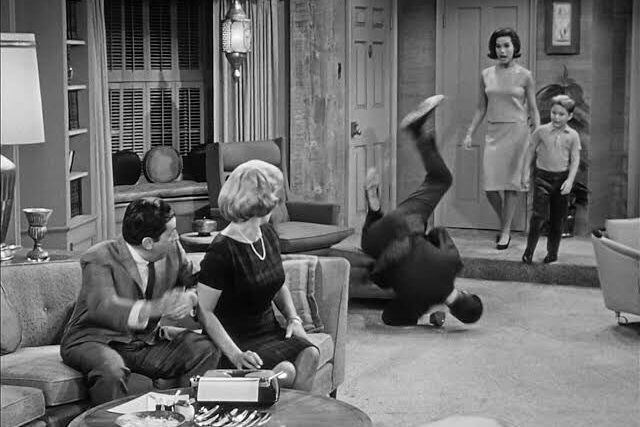
From season two onward, The Van Dyke Show featured two possible opening clips: Rob Petrie either trips over a living‑room ottoman or sidesteps it completely, both filmed intentionally to switch week to week. What seems like a small gag became highly anticipated: fans would literally bet on whether Rob would fall or not. The choice to film two versions turned a simple physical joke into a beloved interactive tradition. It showed sitcoms of the era could create recurring visual humor outside the script, engaging audiences through sly unpredictability and charm.
9. Gilligan’s Nearly Escape Disaster
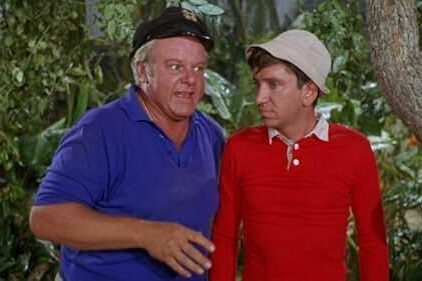
In Gilligan’s Island, the castaways attempt to escape early on only to botch the plan in spectacular fashion. Network executives actually wanted the castaways to leave right away, but creator Sherwood Schwartz insisted the island was central to the show’s identity, rejecting the idea of rescue after the pilot. That early near-escape set the tone: no matter how close they came to going home, something funny or absurd always stopped them. Each episode harbored a fresh escape attempt, only to be undone by Gilligan’s comedic bungling or Murphy’s Law–style twists. The pattern lent consistency to the premise, letting audiences tune in knowing that hopeful moto, getting off the island, would fail, and Gilligan’s innocence would keep them marooned.
10. Emma’s “Cement Pond” Discovery (The Beverly Hillbillies)

In the 1962 pilot, Jed Clampett discovers oil and hires workers who start digging out what looks like a swimming pool, but is actually what they think will be a cement foundation. When it fills with water, they sell it as a “cement pond” to the family, who imagine she’s just picked up the look of high society living. The moment is funny, literal, and perfectly sets the tone for the show: rustic innocence meets yuppie wealth in Beverly Hills. Their earnest misunderstanding of material wealth and status became the central comedic thrust of the series, one that kept audiences laughing for seasons.
11. Get Smart’s “Missed It By That Much”
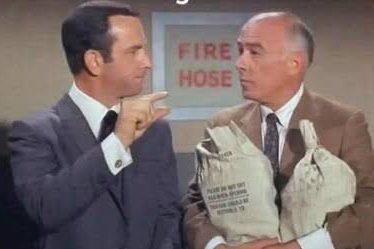
In Get Smart (1965–70), Agent Maxwell Smart (Don Adams) popularized the catchphrase “Missed it by that much”, holding his thumb and forefinger almost touching to show how close he came to success, often only to fail spectacularly. That line became part of everyday language beyond the show. It was used by Johnny Carson and others with the same deadpan comic effect, cementing it as classic TV humor. This phrase, and its popularity, showed how sitcom writing could resonate culturally.
12. Arnold the Pig Watches TV (Green Acres)
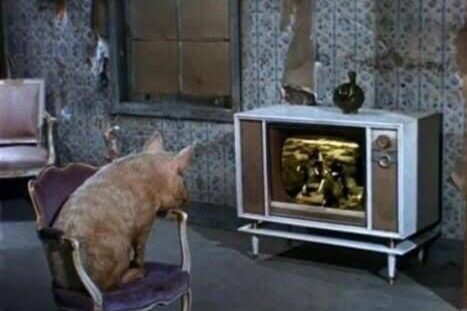
On Green Acres (1965), the Ziffel family treats Arnold Ziffel, a pig, as a human son. Arnold watches the evening news, signs his own name, cooks, plays checkers, and even goes to school, everybody but Oliver Douglas understands him as human except Douglas himself. In one scene, Arnold watches television in bed like a child watching TV, blending farm surrealism and social satire in one moment. That playful absurdity allowed Green Acres to question norms through comedic fantasy: what if a pig lived like a person and was accepted by everyone?
13. Lost in Space’s Robot’s “Danger, Will Robinson!”
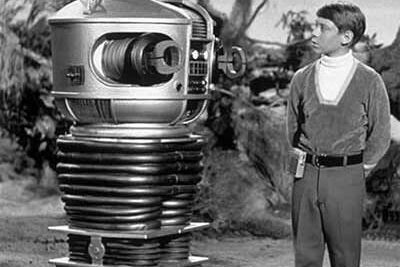
In Lost in Space (first aired 1966), the Robot’s warning “Danger, Will Robinson!” became a signature line, and remains a catchphrase today. Delivered during tense alien encounters, it combined sci‑fi thrills with character-focused storytelling in children’s and family programming. That line made the Robot more than a machine, it became a caring guardian figure. That emotional resonance opened the door for more character‑driven science fiction on TV, influencing shows in decades to follow.
14. Nixon Says “Sock It to Me” on Laugh‑In
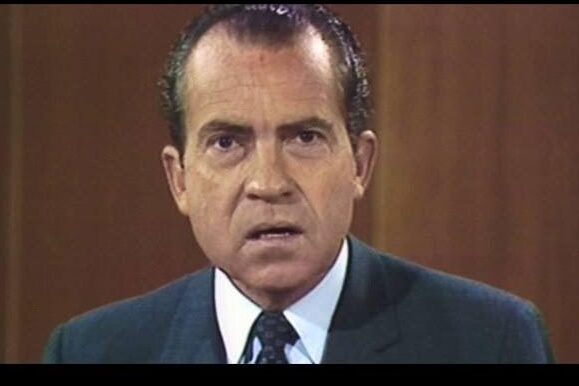
On September 16, 1968, presidential candidate Richard Nixon appeared in a surprise cameo on Rowan & Martin’s Laugh‑In, directly addressing the camera and delivering the show’s catchphrase: “Sock it to me?” His awkward yet earnest delivery, reportedly achieved after six takes, was part of an effort to appeal to younger, TV‑savvy voters shortly before Election Day. The brief clip aired on the number‑one rated show of that season and instantly became a pop‑culture touchstone. Campaign advisers reportedly feared the stunt, but creator George Schlatter and writers pressed ahead, and the appearance is now widely considered a watershed in presidential media relations.
15. The Outer Limits’ Ominous Opening Speech
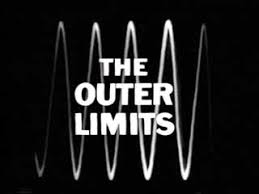
Each episode of The Outer Limits began with the chilling “Control Voice” monologue: “There is nothing wrong with your television set. Do not attempt to adjust the picture. We are controlling transmission… we control the horizontal and the vertical…” . This measured, disembodied narration immediately unsettled viewers and announced the show’s willingness to explore unsettling sci‑fi and psychological territory. That introduction redefined what anthology television could do, inviting viewers into a cerebral, science‑fiction experience loaded with existential tension.
16. Bonanza’s Color TV Revolution
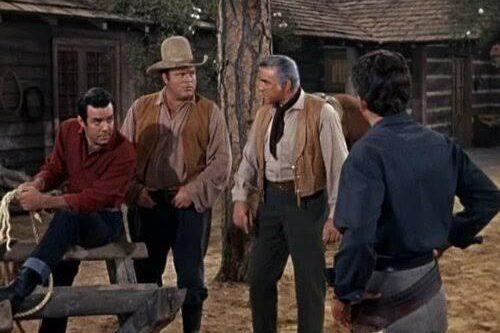
When Bonanza premiered on September 12, 1959, it became the first regularly scheduled hour‑long Western broadcast entirely in color. While black‑and‑white TV still dominated households at the time, NBC and its corporate sibling RCA used Bonanza to showcase the power of color television and drive adoption of the new medium. The show’s vivid landscapes, richly hued costumes, and cinematic visuals transformed audience expectations for prime‑time entertainment. Not only did Bonanza become a long‑running ratings hit, but it also set a new standard for visual storytelling on television, encouraging other producers and networks to embrace color as essential, not optional.
17. Julia Redefines the TV Lead
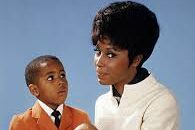
In 1968, Julia broke barriers by featuring Diahann Carroll as a nurse and single mother—the first Black woman to lead a primetime show in a non-servant role. She wasn’t a background character. She was the story. Julia was professional, stylish, and raising her son on her own. Carroll won a Golden Globe for her performance, and the show challenged long-held stereotypes. It quietly reshaped the way Black women were seen on screen. “It wasn’t a protest piece,” Carroll said, “but it was pioneering.” The show may have seemed light, but its presence was powerful. Julia opened doors, changed conversations, and helped move television into a more inclusive future.
18. The Munsters Make Weird Wonderful
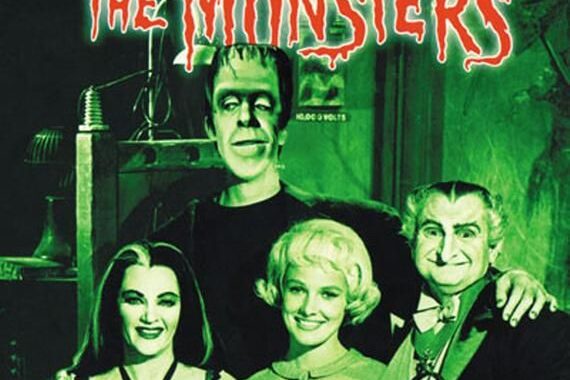
When The Munsters premiered in 1964, they looked like monsters but acted like the most wholesome family on television. Herman, Lily, Grandpa, Eddie, and Marilyn lived in a spooky mansion, but their problems were relatable. They dealt with jobs, school, and misunderstandings—just like everyone else. The show flipped the idea of “normal” on its head. It celebrated difference without making it scary. The humor was warm and never mean. What stood out most was how much this oddball family loved each other. In a time of social change, The Munsters reminded us that what makes you different might just make you special, and that family is about heart, not appearances.
19. Rob and Laura Share a Bed
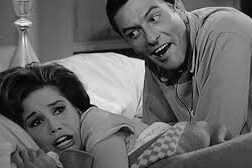
On The Dick Van Dyke Show, something quietly groundbreaking happened: Rob and Laura Petrie shared a bed. Most shows at the time showed married couples sleeping in separate beds to follow strict broadcasting rules. But this sitcom, which aired from 1961 to 1966, started showing them sleeping in one bed like real couples did. It wasn’t treated as a big moment, but it signaled a change in how relationships could be portrayed. The show’s creator, Carl Reiner, believed in depicting life honestly. This small choice helped move television toward more realistic and mature portrayals of married life, one domestic scene at a time. It helped audiences feel more connected to the characters.
20. The Smothers Brothers Push Boundaries
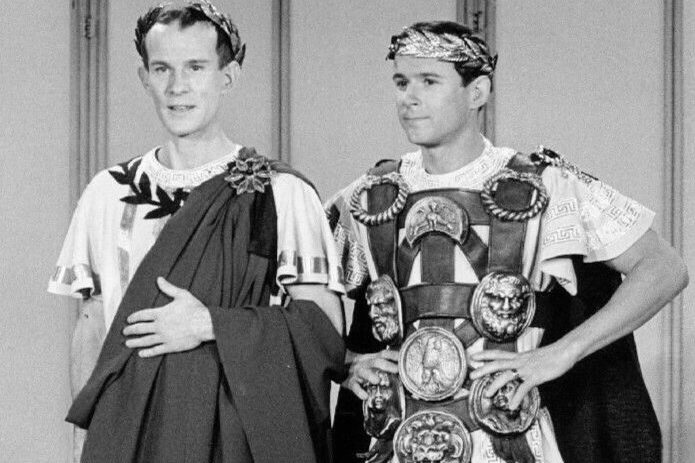
The Smothers Brothers Comedy Hour wasn’t your typical variety show. From 1967 to 1969, Tom and Dick Smothers used their platform to tackle political issues, Vietnam, and censorship. Their mix of music and humor pushed against the boundaries of what networks were comfortable with. CBS often delayed episodes or demanded edits. Eventually, the show was canceled—but not forgotten. It became a symbol of free speech and creative resistance. Tom Smothers famously said, “The network fired us for being right.” Their fight for expression influenced generations of comedians and storytellers. The show proved comedy could carry weight, make people think, and even challenge the status quo.
21. Batman Keeps Fans Hanging
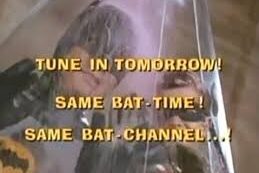
Every episode of Batman in 1966 ended with a cliffhanger, urging viewers to “tune in tomorrow—same Bat-time, same Bat-channel!” It wasn’t just a slogan. It was a brilliant tactic that kept kids glued to the screen. Batman mixed adventure, campy humor, and bright visuals in a way that felt like a comic book come to life. Those cliffhangers made sure fans came back to see how the Caped Crusader and Robin would escape. It turned the show into a daily ritual. Beyond the laughs, the format inspired future television shows to experiment with suspense. Even silly crime-fighting could teach the value of staying tuned for more.
22. I Spy Breaks Ground with a Partner
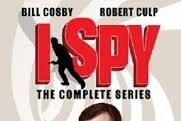
I Spy premiered in 1965 and changed television forever by casting Bill Cosby as a co-lead in a primetime drama. Paired with Robert Culp, Cosby played a capable, clever spy. He wasn’t a sidekick. He was equal. It was the first time a Black actor had a leading role in a mainstream American drama. The show didn’t make a big issue out of race. Instead, it normalized equality. Cosby went on to win three Emmys in a row for his role. Viewers embraced the show for its humor, action, and fresh dynamic. I Spy proved representation could be natural, powerful, and long overdue. It made way for more diverse storytelling.
23. The Flintstones Hit Primetime
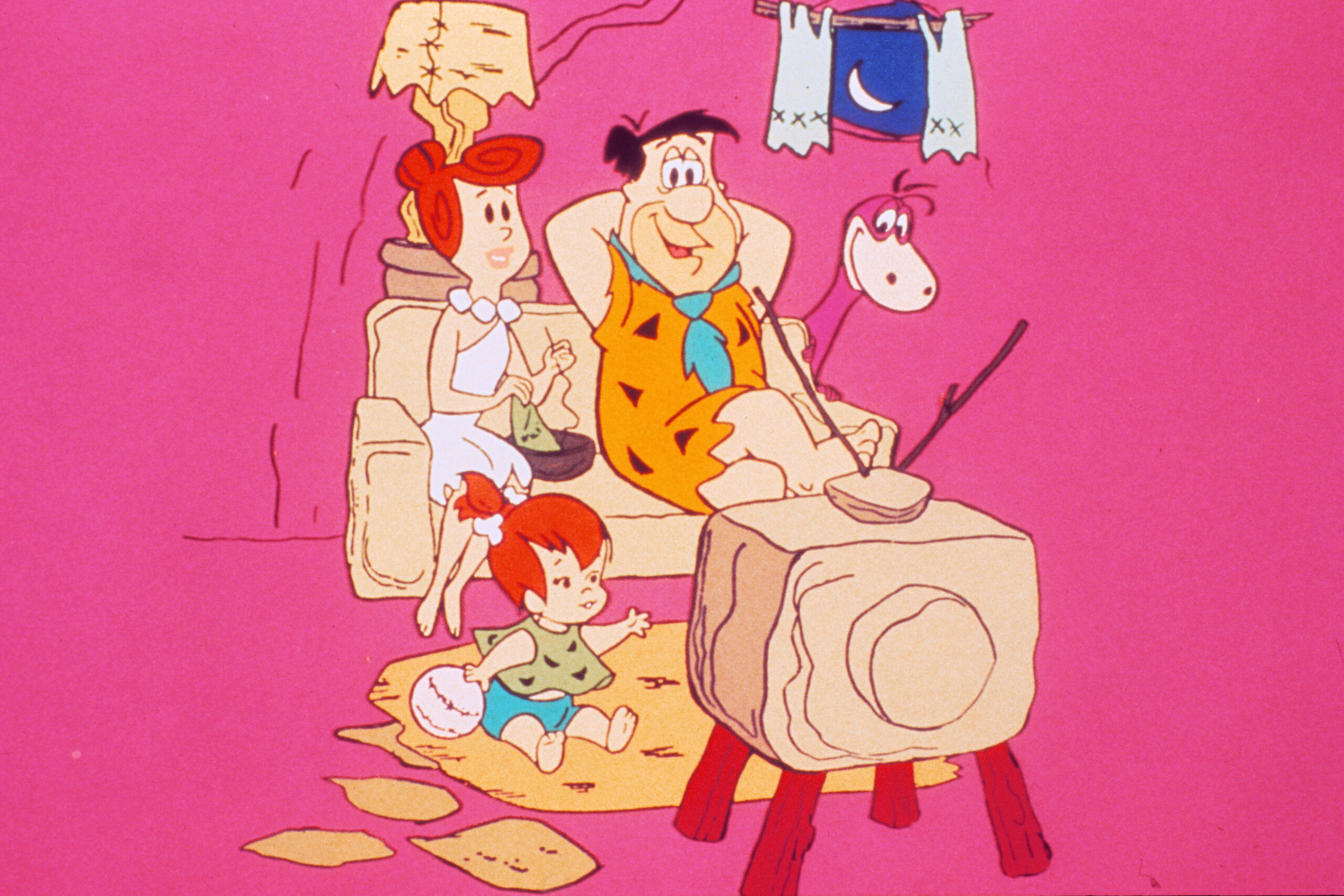
The Flintstones wasn’t just for kids. When it debuted in 1960, it aired in primetime and targeted adults with jokes about marriage, work, and suburban life—all set in prehistoric times. Fred and Wilma had squabbles, jobs, and even sponsored cigarettes in early episodes. Modeled after The Honeymooners, the show made animation appealing to grown-ups. It was also the first animated show to be nominated for an Emmy in the comedy category. The Flintstones paved the way for later series like The Simpsons and Family Guy. With its rock puns and dinosaur appliances, it brought humor, creativity, and satire into living rooms, proving cartoons could entertain everyone.
24. The Beverly Hillbillies Strike Ratings Gold
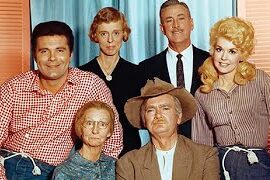
In 1962, The Beverly Hillbillies debuted and became an instant sensation. Within weeks, it was the number-one show in America. Viewers loved watching the Clampetts, a rural family suddenly rich from oil, try to adjust to life in Beverly Hills. The show’s mix of simple values and absurd culture clashes made it accessible to viewers everywhere. Critics weren’t always kind, but audiences didn’t care. The series tapped into a deep love for underdog stories and country charm. It showed networks that broad comedy could attract massive ratings. The Clampetts may have been outsiders in the city, but on television, they fit in perfectly.
25. Andy Griffith Brings Calm to TV
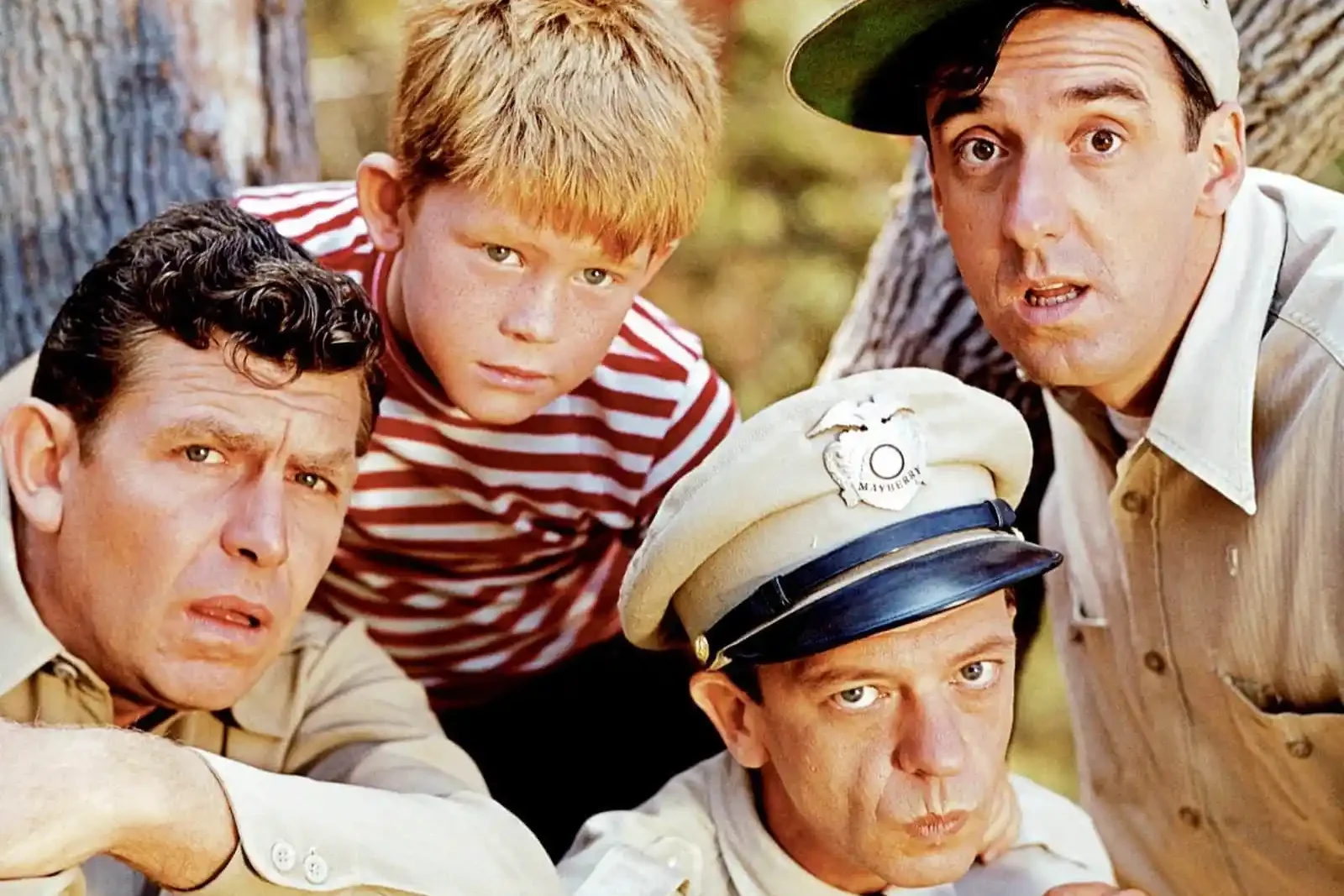
The Andy Griffith Show, which aired from 1960 to 1968, offered something rare in turbulent times: peace. Sheriff Andy Taylor, played by Griffith, didn’t carry a gun or bark orders. He solved problems with patience, wisdom, and kindness. Set in the fictional town of Mayberry, the show was filled with gentle humor and heartfelt lessons. Ron Howard, who played Opie, later said the show taught him how to be a better person. It was a place where people apologized, listened, and grew. In the chaos of the ’60s, Mayberry became a sanctuary for viewers who just wanted a little comfort and calm in their lives.
26. Dragnet Makes It Real
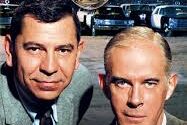
When Dragnet returned to television in 1967, it brought with it a stark new realism. Created by and starring Jack Webb, the show focused on real-life police work in Los Angeles. Its signature line, “Just the facts, ma’am,” captured the show’s serious tone. Episodes avoided dramatics and stuck to methodical investigations, making it one of the first police procedurals. Webb believed in showing law enforcement as disciplined and grounded. The documentary-style format was influential, laying the groundwork for dozens of later crime dramas. Dragnet didn’t need chase scenes or big explosions. It had routine, rules, and the quiet power of real life.
27. Bewitched Blends Magic with Reality
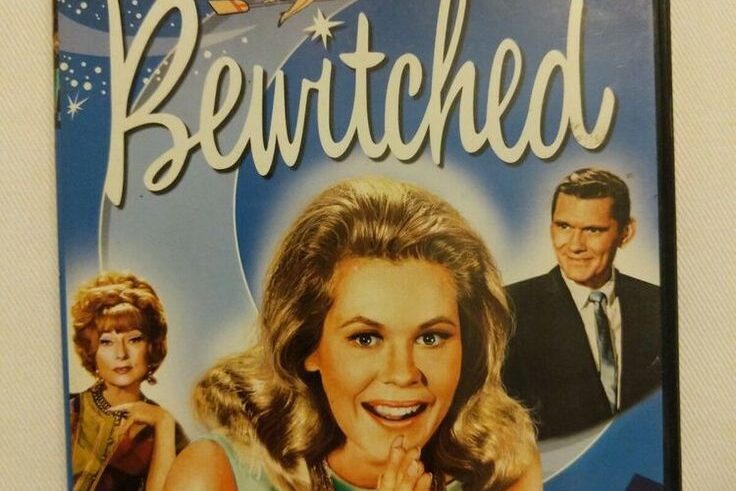
In 1964, Bewitched introduced audiences to Samantha, a witch who tried to live a normal suburban life. Married to a mortal man, she constantly had to hide her magical powers, leading to plenty of charm and chaos. But beneath the comedy was a subtle message about identity and independence. Samantha’s magical abilities represented all the strengths women were expected to suppress. The show balanced fantasy with real domestic struggles, making it more than just a sitcom. Elizabeth Montgomery’s performance gave Samantha heart, humor, and quiet power. Bewitched became a beloved classic, showing that even in a world of spells, what women really needed was the freedom to be fully themselves.
28. The Addams Family Makes Strange Sweet
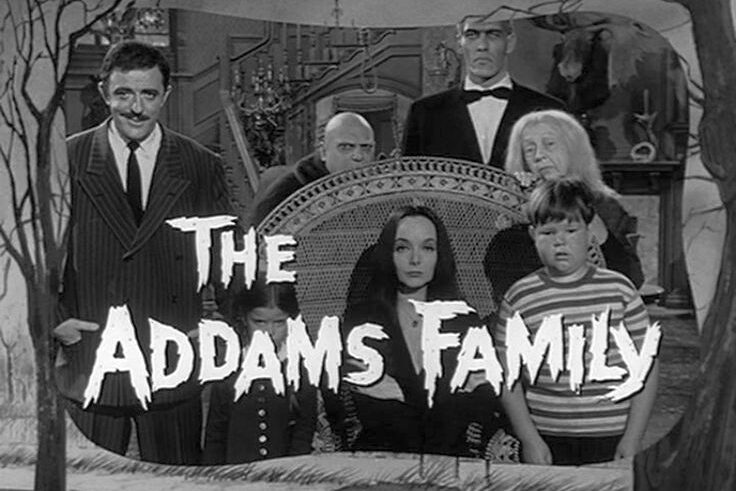
When The Addams Family premiered in 1964, it turned gothic oddness into something loving and light. Gomez, Morticia, and the rest of the crew didn’t care about fitting in. They simply adored each other. Their spooky house, morbid jokes, and eccentric habits were all part of their unique charm. The show flipped the script by portraying the Addamses as perhaps the most functional family on television. Gomez and Morticia’s affectionate marriage stood out in a sea of cold sitcom couples. The show embraced difference and made it beautiful. It reminded audiences that family doesn’t have to be ordinary to be strong, and being yourself is something to celebrate.
29. That Girl Stands on Her Own
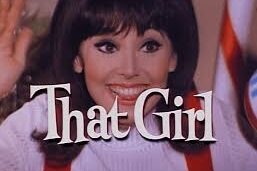
Before Mary Tyler Moore made single women the face of modern independence, Marlo Thomas paved the way as Ann Marie in That Girl. Premiering in 1966, the show followed a young woman living alone in New York, chasing an acting career and defining life on her own terms. She wasn’t looking to settle down quickly or be rescued. She had ambition and voice. Marlo Thomas later said, “I wanted to show that a woman’s life didn’t have to revolve around a man.” That Girl offered a fresh, feminist message without preaching. It gave viewers, especially young women, a character who made her own choices and didn’t apologize for wanting more.
30. CBS Quietly Shifts the Landscape
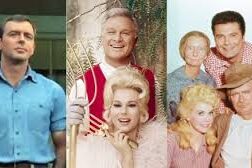
In the late 1960s, CBS was still thriving with country comedies like Green Acres and The Beverly Hillbillies. But quietly, the network began moving away from those rural hits. Executives wanted younger, more urban audiences. This shift, later called the “rural purge,” led to the cancellation of popular shows in favor of edgier, socially conscious programming. Even high-rated series weren’t safe. Though the change happened behind closed doors, its effects were major. It marked a turning point in network strategy, where ratings alone were no longer enough. Television was growing up, and the industry began asking what kind of stories really mattered in a changing world.
31. Laugh-In Speeds Up Comedy
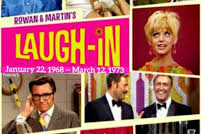
Rowan & Martin’s Laugh-In exploded onto screens in 1968 with a pace viewers had never seen. It wasn’t just fast. It was packed. The show was a colorful blur of punchlines, catchphrases, quick cuts, and absurd sketches. Regulars like Goldie Hawn and Lily Tomlin helped define its zany charm. Laugh-In didn’t follow the rules. It broke them and wrote new ones. It became the highest-rated show of its time, with jokes that reflected a changing, rebellious generation. The show’s rhythm helped shape modern sketch comedy, from Saturday Night Live to TikTok-style edits. Laugh-In proved that audiences were ready for humor that matched the speed of their world.
32. Topo Gigio Charms Viewers
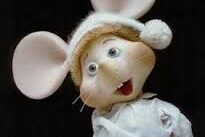
Of all the guests who visited The Ed Sullivan Show, one tiny puppet stole hearts. Topo Gigio, the Italian mouse with a soft voice and tender expressions, became a recurring favorite. His signature line, “Eddie, kiss me good night,” made audiences smile each time. The simplicity of his character and the sweetness of his tone gave the show an unexpected emotional lift. In a time when television often relied on big acts and bold jokes, Topo’s gentle presence stood out. He didn’t need flash or tricks. Just kindness. His appearances were a reminder that sincerity, especially in the smallest form, could still steal the show and leave a lasting impression.
33. “Eye of the Beholder” Reveals Truth
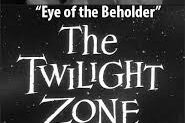
One of The Twilight Zone’s most unforgettable episodes, “Eye of the Beholder,” aired in 1960 and left viewers stunned. A woman undergoes surgery to “fix” her face, only for the twist to reveal she is conventionally beautiful and the world around her is not. It was a direct challenge to society’s standards of beauty and acceptance. Rod Serling’s haunting storytelling forced audiences to question their own biases. The story didn’t offer easy answers. It held up a mirror and asked viewers to think. This episode remains a powerful example of how television can explore deep issues through powerful visuals and smart writing. It’s still discussed today for good reason.
34. Gomer Pyle Wins Hearts in Uniform
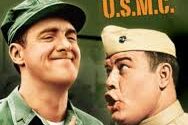
Gomer Pyle, U.S.M.C. spun off from The Andy Griffith Show and gave viewers a new kind of military comedy. Premiering in 1964, it followed sweet, slow-talking Gomer as he navigated life in the Marine Corps. With his sincere heart and gentle ways, Gomer clashed with the rigid rules of his drill sergeant, creating both laughs and unexpected moments of care. Jim Nabors brought the character a kind of innocence that made the show deeply human. In a time when military topics were becoming tense, the show softened the image of service with humor and love. Gomer reminded viewers that decency could still wear a uniform and bring peace.
35. Wild Kingdom Goes Into the Wild
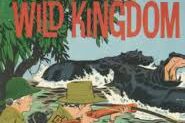
Long before nature documentaries became popular, Mutual of Omaha’s Wild Kingdom brought animals and ecosystems into living rooms. Starting in 1963, host Marlin Perkins and his brave assistant Jim Fowler traveled the world, showcasing everything from lions to anacondas. While Perkins explained calmly, Fowler often found himself face to face with the animals. The show taught viewers about conservation, wildlife behavior, and the importance of preserving nature. It was educational but never dull. Wild Kingdom made science entertaining and accessible for families across America. It showed that learning could be fun and that protecting the planet began with understanding it better, one fascinating creature at a time.
36. Lucille Ball Builds a TV Empire

By 1962, Lucille Ball had already become a comedy legend. But her influence grew even more when she took over Desilu Studios after her divorce from Desi Arnaz. As the first woman to run a major television studio, she didn’t just star—she made big decisions. Lucille greenlit bold projects like Star Trek and Mission: Impossible, shaping the future of science fiction and action television. She trusted talent and innovation over formulas. Her role behind the scenes proved that women could lead in an industry where they were rarely given credit. Lucille wasn’t just America’s funny girl. She was a pioneer who built a legacy that reshaped the business of television.
37. Then She Tackles Single Motherhood
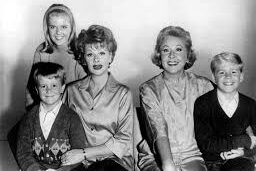
When The Lucy Show debuted in 1962, Lucille Ball returned to television—but this time as a widow raising kids on her own. It was one of the first mainstream portrayals of single motherhood. The character wasn’t pitied or made into a stereotype. She was capable, funny, and completely in charge. While the comedy was still classic Lucy, the premise offered something different: a woman building her life without relying on a man. It gave audiences a new image of family and strength. Ball’s real-life influence and comedic brilliance made it work. The Lucy Show balanced laughs with forward-thinking representation, making single moms feel seen at a time when they were often overlooked.
38. Mission: Impossible Changes the Game
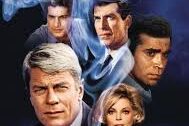
Mission: Impossible launched in 1966 with a fresh take on the spy genre. Instead of one hero, the show used a rotating team of specialists who worked together to pull off complex missions. The iconic self-destructing tape gave each episode a high-stakes opening, followed by clever strategy and suspense. The show emphasized intelligence, precision, and teamwork over brute force. Viewers were drawn to the smart storytelling and cool gadgets. It inspired future action shows and movies, including the long-running film series starring Tom Cruise. Mission: Impossible was sleek, stylish, and smarter than most of its competition. It made espionage more than thrilling. It made it thoughtful and unforgettable.
39. Mary Tyler Moore Throws Her Hat
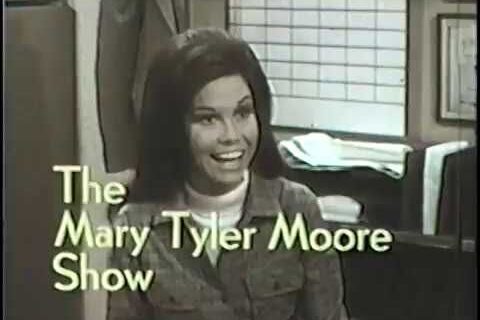
Though The Mary Tyler Moore Show officially premiered in 1970, its pilot was taped in 1969, and it changed everything. In that opening scene, Mary walks through a snowy Minneapolis street, tosses her hat in the air, and smiles like she owns the world. It was a small gesture with big meaning. Mary Richards was single, working, and not defined by marriage. She became an icon of independence, confidence, and possibility. The hat toss became a symbol for women stepping into their own stories. It didn’t scream revolution. It simply showed a woman happy to be herself. The future was coming, and Mary showed us how to face it with joy.
This story 39 Game-Changing TV Moments That Defined an Era (1959–1969) was first published on Daily FETCH


